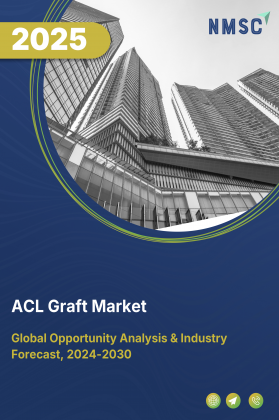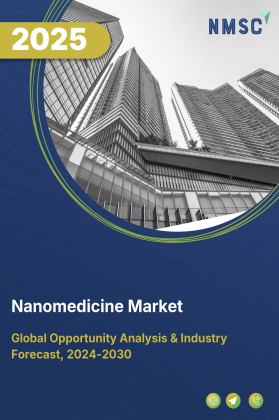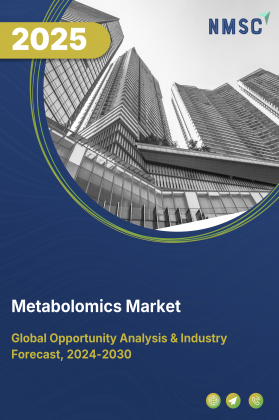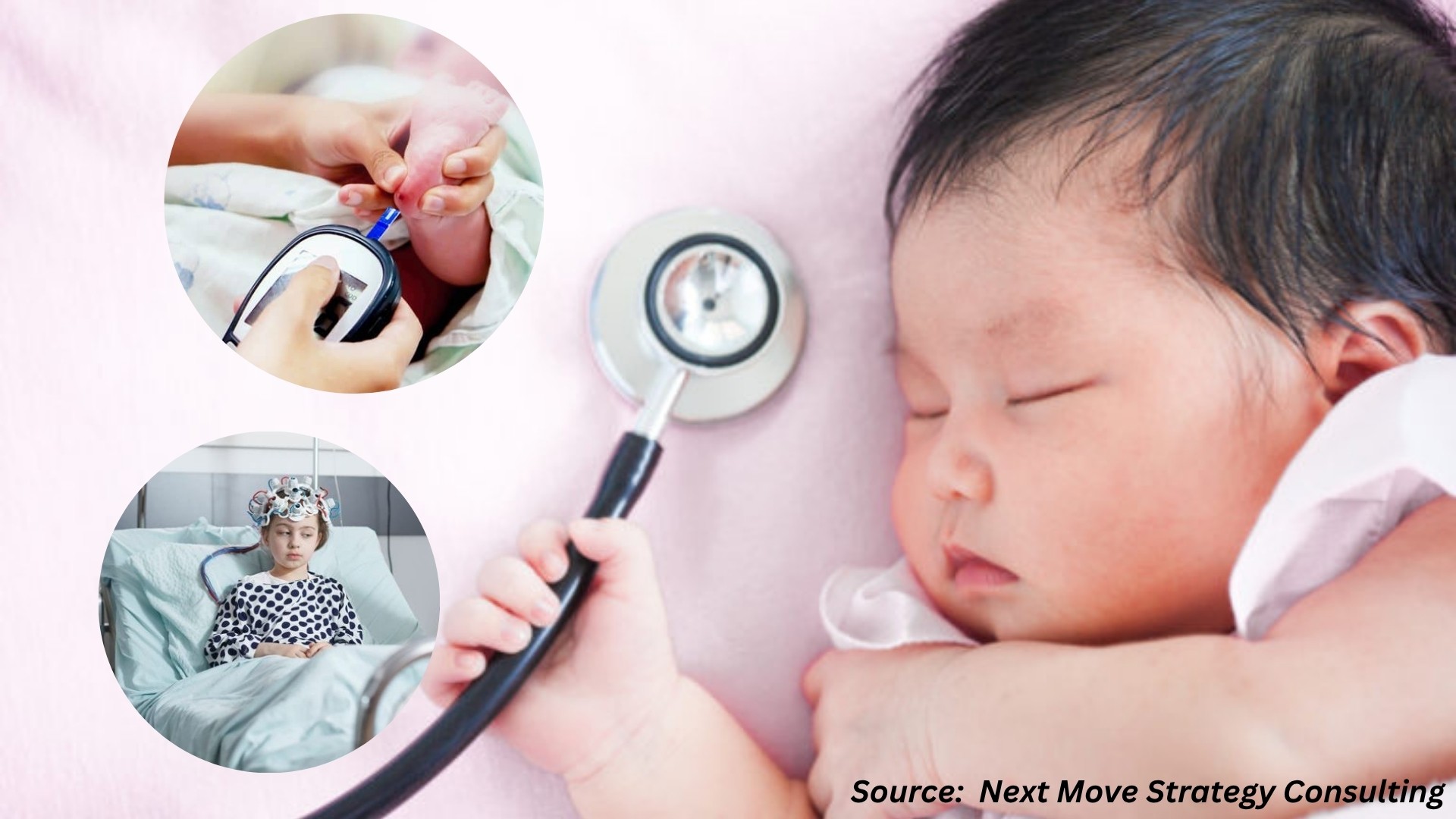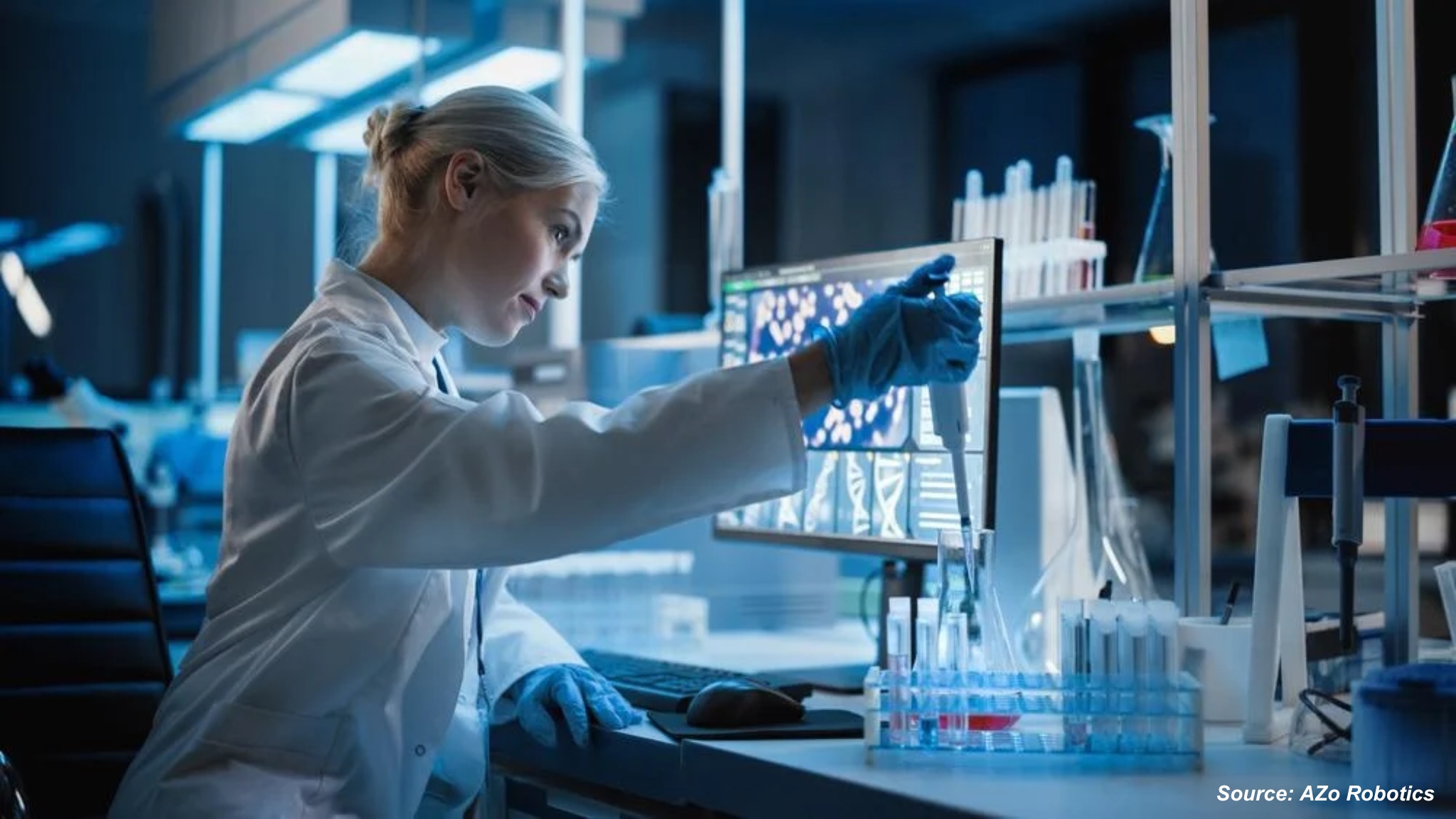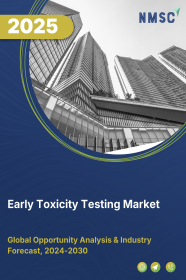
Early Toxicity Testing Market by Technique (In Vivo, In Vitro, and In Silico), by Toxicity Endpoint (Genotoxicity, Dermal Toxicity, Skin Toxicity, Ocular Toxicity, Phototoxicity, and Others), by End User (Pharmaceutical Industry, Cosmetic Industry, Chemical Industry, Food Industry, and Others) – Global Opportunity Analysis and Industry Forecast, 2023-2030
Industry: Healthcare | Publish Date: 15-May-2025 | No of Pages: 369 | No. of Tables: 260 | No. of Figures: 205 | Format: PDF | Report Code : HC392
Early Toxicity Testing Market Report - Comprehensive Overview | |
| Study Period | 2020 - 2030 |
| Base Year for Estimation | 2024 |
| Forecast Data Period | 2026 - 2030 |
| Market Size in Base Year | 10.97 |
| Market Size in Forecast Year | 14.39 |
| Growth Rate 2026 - 2030 | 5.58% |
| Growth Factors | |
| Report Coverage | The report provides insights on market size, forecasts, emerging trends, competitive landscape, key segments, growth opportunities, recent developments, and strategic recommendations to help stakeholders make informed business decisions. |
| Segments Covered | Early Toxicity Testing Market by Technique (In Vivo, In Vitro, and In Silico), by Toxicity Endpoint (Genotoxicity, Dermal Toxicity, Skin Toxicity, Ocular Toxicity, Phototoxicity, and Others), by End User (Pharmaceutical Industry, Cosmetic Industry, Chemical Industry, Food Industry, and Others) |
| Countries Covered | 28 |
| Geographical Analysis | North America (The U.S., Canada, Mexico); Europe (The UK, Germany, France, Italy, Spain, Denmark, Netherlands, Finland, Sweden, Norway, Russia, Rest of Europe); Asia-Pacific (China, Japan, India, South Korea, Australia, Indonesia, Singapore, Taiwan, Thailand, Rest of Asia-Pacific) and RoW (Latin America, Middle East, Africa) |
| Companies Profiled | Top 10 companies |
| Competitive Landscape | |
| Market Share | Available for top 10 companies |
| Customization Scope | Free customization (equivalent to up to 80 working hours of analysts) after purchase. Addition or alteration to country, regional, and segment scope. |
| Purchase Option | Avail customized purchase options to meet your exact research needs. |
Market Definition
The global Early Toxicity Testing (ETT) Market size was valued at USD 8.92 billion in 2022 and is predicted to reach USD 14.39 billion by 2030, registering a CAGR of 5.3% from 2023 to 2030. Early toxicity testing is a process that involves evaluating the potential toxicity or adverse effects of drugs, chemicals, or other substances at an early stage of development, typically in vitro or in animal models, before they are tested in humans. Early toxicity testing aims to identify any potential safety concerns with a substance and determine whether it is safe to proceed with further development and testing.
Early toxicity testing typically involves a range of tests and assays, such as cell viability assays, genotoxicity assays, and pharmacokinetic studies. The industry has emerged as a crucial step in drug development, allowing researchers and pharmaceutical companies to identify the potentially toxic effects of drugs before being tested on humans. By identifying potential toxic effects early on in the drug development process, researchers and pharmaceutical companies can avoid investing significant resources in drugs that are unlikely to be successful, ultimately saving time and money while bringing safe and effective treatments to patients more quickly.
The ETT industry has significant growth prospects, as both developed and developing countries are placing considerable emphasis on R&D activities and allocating a greater portion of their GDP budgets toward developing novel drugs and technologies for treating life-threatening diseases. As per Pharmaprojects, the aggregate count of pipeline preclinical drug development activities surged to 11,351 in 2022, representing an increase from the preceding figure of 10,223 in 2021.
Growth in Pharmaceutical & Biotechnology R&D Activities
The rise in the prevalence of chronic diseases, such as diabetes, cancer, and cardiovascular diseases, has increased the need for new and effective treatments. As a result, pharmaceutical and biotechnology companies are investing heavily in R&D activities to develop new drugs and therapies for these diseases. To ensure the safety of new medicines and treatments, extensive toxicological testing is required to identify any potential safety issues or adverse effects.
Therefore, early toxicity testing ensures that only safe and effective drugs are tested in clinical trials, reducing the risk of harm to trial participants. As a result, the growth in demand for new drugs and therapies combined with the need for extensive toxicological testing to ensure their safety propels the demand for early toxicity testing services.
Rising demand for food processing as well as concerns related to its safety
The rising demand for food processing and concerns related to food safety are major drivers of the growth of the early toxicity testing industry. The global food industry is constantly expanding, and consequently, there is a rise in the need to ensure the safety of food products. Early toxicity testing plays a crucial role in this process by identifying potentially harmful substances in food and ensuring that food products are safe for consumption.
Several factors contribute to concerns related to food safety, such as the use of pesticides, genetically modified organisms (GMOs), and other chemicals in food production. Early toxicity testing allows for assessing the potential toxicity of these substances, ensuring that they are safe for human consumption.
In addition, there is growing consumer awareness and concerns about the safety of food products, which have led to increased regulatory scrutiny and stricter safety standards. Early toxicity testing is essential to compliance with these regulations and standards, as it identifies potential hazards and helps ensure that food products are safe for consumption.
Growing Consumer Awareness about Hazardous Cosmetic Products
The increasing awareness among consumers about the potential hazards associated with cosmetic products that may cause adverse reactions on the skin has compelled companies to undertake early toxicity testing. Early toxicity testing helps assess the potential effects of cosmetic ingredients on living organisms, including skin irritation, sensitization, and phototoxicity. This testing can be performed on various organisms, including human cells, tissues, and volunteers. It can identify the potential toxicity of cosmetic ingredients in the early stages of development.
Moreover, regulatory bodies such as the Food and Drug Administration (FDA) and the European Commission require companies to conduct toxicity testing on cosmetic ingredients to evaluate their potential impact on human health. This testing is critical for obtaining regulatory approval for the use and distribution of cosmetic products. Thus, propelling the growth of the early toxicity testing industry.
Stringent regulations and high costs associated with the testing process
Early toxicity testing can be expensive, particularly for large-scale studies involving a variety of organisms and multiple endpoints. The high cost of toxicity testing can be a significant deterrent for small and medium-sized companies that may need more financial resources to conduct extensive testing.
Moreover, the growth of the early toxicity testing market is restrained due to the rigorous and extensive testing required for drug development and safety, as set forth by regulatory bodies such as the U.S. FDA and the European Medicines Agency. These stringent regulations can prolong the approval process for new drugs, further delaying their arrival in the market. It is expected that this delay will impede the growth of the market.
The introduction of 3D cell culture and bioinformatics
3D cell culture enables the development of more physiologically relevant in vitro models, which mimic living tissues' complex interactions and architecture in a better manner. This allows for more accurate and reliable toxicity testing than traditional 2D cell culture models. Additionally, 3D cell culture can reduce the need for animal testing, which is more ethical and cost-effective in the long run.
Moreover, bioinformatics provides a powerful tool for analyzing large data sets generated by high-throughput screening methods. Integrating bioinformatics with 3D cell culture enables the identification of biomarkers that can be used to predict drug toxicity and efficacy more accurately than before. This approach can streamline drug development by reducing the number of compounds that require extensive in vivo testing.
Furthermore, combining 3D cell culture and bioinformatics creates opportunities for personalized medicine. Patient-specific cells can be cultured in a 3D environment and subjected to high-throughput screening using bioinformatics, leading to the identification of optimal drug treatments for individual patients. This approach could revolutionize the drug development process and improve patient outcomes.
Asia-Pacific is Dominating in Terms of the Higher Number of Early Toxicity Tests
The Asia-Pacific region is expected to dominate the early toxicity testing industry, primarily due to its emphasis on R&D activities and the expansion of this sector in countries such as Japan, South Korea, and Australia. As of March 2021, the National Center for Biotechnology Information reports that the pharmaceutical industry in this region has been growing at an annual rate of 5.8% since 2017.
Moreover, the incidence of strokes is increasing in certain countries of the Asia-Pacific region, including China, India, Japan, and South Korea. This, in turn, is driving growth in the ETT industry. Stroke is a critical area of concern for early toxicity testing, as it plays a vital role in developing new drugs and therapies for stroke patients. According to the National Center for Biotechnology Information, as of March 2022, it was stated that there were 3.4 million incident cases of stroke, 17.8 million prevalent cases of stroke, and 2.3 million deaths from stroke among the Chinese population aged 40 years and older.
Furthermore, the rapidly growing drug development by pharmaceutical and biotech companies across the region fosters the growth of the early toxicity testing market. According to the Korea Drug Development Fund (KDDF), a total of 559 new pipelines were being developed by domestic companies as of 2021. This includes channels for various therapeutic areas, such as oncology, rare diseases, and infectious diseases.
North America Witnessed Substantial Growth
The presence of prominent companies, including Danaher Corporation, Charles River Laboratories, and Thermo Fisher Scientific Inc. in the region, that are engaged in early toxicity testing of various drug discoveries drives the market growth. Moreover, the region has a huge number of Contract Research Organizations (CROs), mostly in the U.S., as CROs play an important role in the growth of this industry by providing outsourced research services to pharmaceutical and biotechnology companies that need to conduct toxicity testing as part of their drug development programs.
Moreover, the growth of the biotechnology and pharmaceutical sectors in this region has resulted in a surge in drug research and development endeavors, leading to a greater need for early toxicity testing services that can facilitate the development of novel vaccines and medications. According to a report published by the Government of Canada, Canada is the 9th largest pharmaceutical market in the world, with over 1,100 small and medium-sized enterprises and USD 1.2 billion invested in R&D activities in 2019.
Furthermore, the region is excelling in terms of the early toxicity testing market, owing to the presence of developed economies that are dedicatedly involved in the high number of drugs under R&D. According to the Pharmaprojects, the U.S. had a total number of 10,736 drugs under R&D, followed by Canada with 2,182 drugs under R&D in 2022.
Competitive Landscape
Various market players that operate in the early toxicity testing industry include Merck KGaA, Laboratory Corporation of America Holdings, WuXi AppTec, Evotec SE, Medpace, Thermo Fisher Scientific Inc., Agilent Technologies, Inc., Eurofins Scientific, Molecular Devices, LLC., Boehringer Ingelheim, SGS SA, ImQuest BioSciences, Bayer AG, Lonza, Fortrea. These market players are adopting strategies such as business expansion and acquisition across various regions to maintain their dominance in the early toxicity testing market.
For instance, in April 2023, Agilent Technologies Inc. acquired Avida Biomed, a contract research organization specializing in vitro and in vivo toxicity testing, including ADME/DMPK studies. This acquisition will expand Agilent's capability in preclinical drug development, including early toxicity testing, and complement its existing portfolio of pharmaceutical research and development solutions.
Moreover, in July 2022, Inotiv, Inc. announced the expansion of its genetic toxicology offerings at its Rockville, Maryland facility by adding Good Laboratory Practice (GLP) assays to its portfolio, enabling it to conduct more comprehensive early toxicity testing. With this expansion, Inotiv can offer clients a broader range of genetic toxicology services, including Ames testing, in vitro micronucleus testing, and in vitro chromosomal aberration testing.
In addition, in November 2021, WuXi Apptec opened a new facility in Philadelphia to expand its testing capabilities to support global customers with gene and cell therapy development and manufacturing services. The new facility offers cGMP-compliant testing services, including lot release, stability testing, and analytical method development and validation.
Early Toxicity Testing Market Key Segments
By Technique
-
In Vivo
-
In Vitro
-
Cell Culture
-
PCR
-
ELISA
-
Western Blotting
-
Protein Binding Assays
-
-
In Silico
By Toxicity Endpoint
-
Genotoxicity
-
Dermal Toxicity
-
Skin Toxicity
-
Ocular Toxicity
-
Phototoxicity
-
Others
By End User
-
Pharmaceutical Industry
-
Cosmetic Industry
-
Chemical Industry
-
Food Industry
-
Others
By Geography
-
North America
-
The U.S.
-
Canada
-
Mexico
-
-
Europe
-
The U.K.
-
Germany
-
France
-
Italy
-
Spain
-
Netherlands
-
Denmark
-
Finland
-
Norway
-
Sweden
-
Russia
-
Rest of Europe
-
-
Asia-Pacific
-
Australia
-
China
-
India
-
Indonesia
-
Japan
-
Singapore
-
South Korea
-
Taiwan
-
Thailand
-
Rest of Asia Pacific
-
-
RoW
-
Latin America
-
Middle East
-
Africa
-
Key Players
-
Merck KGaA
-
Laboratory Corporation of America Holdings
-
WuXi AppTec
-
Evotec SE
-
Medpace
-
Thermo Fisher Scientific Inc.
-
Agilent Technologies, Inc.
-
Eurofins Scientific
-
Molecular Devices, LLC.
-
Boehringer Ingelheim
-
SGS SA
-
ImQuest BioSciences
-
Bayer AG
-
Lonza
-
Fortrea
REPORT SCOPE AND SEGMENTATION:
|
Parameters |
Details |
|
Market Size in 2022 |
USD 8.92 Billion |
|
Revenue Forecast in 2030 |
USD 14.39 Billion |
|
Growth Rate |
CAGR of 5.3% from 2023 to 2030 |
|
Analysis Period |
2022–2030 |
|
Base Year Considered |
2022 |
|
Forecast Period |
2023–2030 |
|
Market Size Estimation |
Billion (USD) |
|
Growth Factors |
Growth in pharmaceutical & biotechnology R&D activities Rising demand for food processing as well as concerns related to its safety |
|
Countries Covered |
28 |
|
Companies Profiled |
15 |
|
Market Share |
Available for 10 companies |
|
Customization Scope |
Free customization (equivalent to up to 80 analysts’ working hours) after purchase. Addition or alteration to country, regional & segment scope. |
|
Pricing and Purchase Options |
Avail customized purchase options to meet your exact research needs. |




















 Speak to Our Analyst
Speak to Our Analyst



